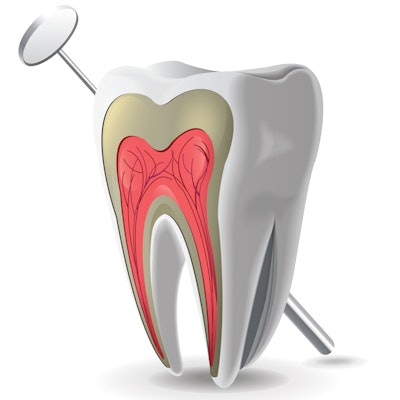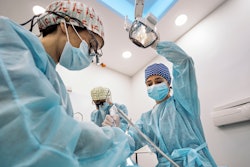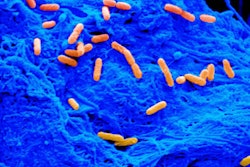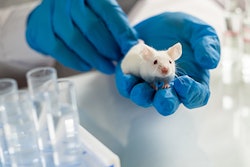
Researchers in New Jersey are developing a first-of-its-kind materials-based therapy that restores lost tooth pulp by triggering the body to regenerate it. The project, funded by a $3 million grant from the U.S. National Institutes of Health, would offer an alternative to conventional root canals.
The goal of the researchers is to make a material that does not contain live cells so that it could be sold off-the-shelf. Details about the project were shared in a June press release issued by the New Jersey Institute of Technology (NJIT).
"Teeth lacking dental pulp are more vulnerable to cracking and can respond poorly to future bacterial infections and mechanical injuries," Vivek Kumar, PhD, a bioengineer at NJIT and the principal investigator, said in the release. "In particular, we'd prefer to avoid killing and removing a child's permanent tooth that is still growing, but instead, help the roots thicken and lengthen."
Annually, dentists in the U.S. perform more than 15 million root canals. The procedure leaves a shell of the tooth that has been filled with inert materials, including rubber and cement. Currently, the U.S. Food and Drug Administration has not approved any technologies that restore native dental pulp.
Kumar and co-researchers Dr. Emi Shimizu, PhD, and Carla Cugini, PhD, both from the department of oral biology at the Rutgers School of Dental Medicine, have made some headway. The pair created an injectable hydrogel composed of biocompatible amino acid peptides that aggregate into fibers.
 NJIT's Vivek Kumar (left) and Emi Shimizu and Carla Cugini of the Rutgers School of Dental Medicine are developing an alternative remedy to conventional root canals. Image courtesy of NJIT.
NJIT's Vivek Kumar (left) and Emi Shimizu and Carla Cugini of the Rutgers School of Dental Medicine are developing an alternative remedy to conventional root canals. Image courtesy of NJIT.The material recruits a patient's own dental pulp stem cells directly to the disinfected cavity after a root canal. It delivers biological cues to direct tissue growth, as well as a scaffold structure to support it, according to the release.
In addition, hydrogel therapy not only imitates the body's own growth factor signaling, but when known antimicrobial mechanisms are engineered into the material, it can promote tissue healing and regeneration.
The hydrogel has been tested in early animal trials. When dogs were injected with the hydrogel, they formed soft tissue from the tooth apex to the crown in less than a month, according to the researchers.
"We saw a lot of different tissues, including blood vessels, nerve bundles and pulplike cells," Kumar said. "One of the primary goals of this project is to determine the type of cells that reorganize and repopulate the regenerated tissue."
The engineers still face challenges, including creating blood vasculature, which is the system that delivers nutrients to regenerated cells. They have addressed this problem by adding a protein known as vascular endothelial growth factor that stimulates new blood cell growth to the hydrogel, Shimizu said in the release.
Meanwhile, Cugini, a microbiologist who studies oral microbial biofilms, is focusing on developing solutions to inhibit harmful bacterial growth in the new tissue. Another peptide that Kumar developed for a different antimicrobial application destroyed the multidrug-resistant bacterium Pseudomonas aeruginosa, which is commonly found in the environment and causes infections in the blood, lung, and other body parts after surgical procedures, by disrupting its membrane.
The team will test whether the antimicrobial peptide hydrogel, which is known as K6, is effective against a panel of oral bacteria.
"We feel confident it will not disrupt the entire microbiome, because our localized delivery to the canal space and hydrogel properties ensure the peptide remains where we put it," Cugini said.
In a separate study, the group tested a different hydrogel that contained only the antimicrobial peptide, and it showed that in combination with the peptides that spur blood vessel development, it could create scaffolds that performed both functions. In the future, they plan to combine and test both therapies in a single hydrogel, according to the release.




















